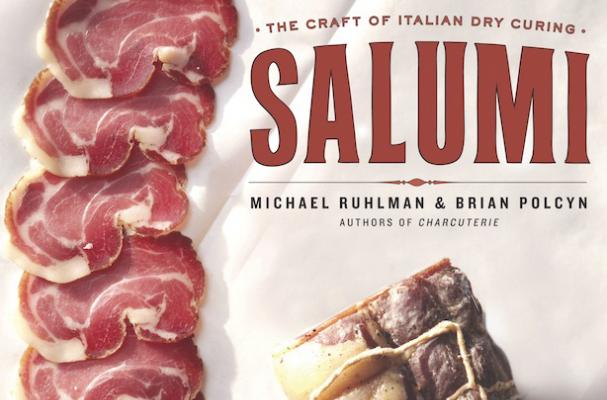
The DIY movement has surpassed preserving dill pickles and strawberry jam. People are venturing to make their own cheese and cured meats. Salumi: The Craft of Italian Dry Curing by Michael Ruhlman and Brian Polcyn recognized this revival and have written a cookbook dedicated to understanding and reproducing the artisanal sausage at home. The authors are no strangers to the art of curing meat; the duo released Chacuterie: The Craft of Salting, Smoking and Curing in 2005. Salumi provides specific yet simple instructions to demystify Italian cured meats into a doable task. The book outlines eight of Italy's most famous pork products including guanciale, coppa, spalla, lardo, lonza, pancetta, proscuitto, and of course, salami. In addition, there is a section that describes how to butcher an entire pig using both the Italian and American method. Salumi is a fundamental resource for anyone interested in the ancient craft of curing meat.
Salami Felino
Felino is a town in the province of Parma in the heart of Emilia-Romagna. Hogs are said to have populated this area since the Bronze Age, and as the prosciutto of Parma became famous, so too did its salami. It’s a simple sausage, dependent on the quality of the pork, seasoned with just salt, pepper, garlic, red wine, and a small amount of sugar for sweetness.
2 pounds/900 grams pork shoulder butt, cut into large dice
2 pounds/900 grams boneless lean beef (chuck or round), cut into large dice
1 pound/450 grams pork back fat, cut into large dice
2 ounces/56 grams sea salt
1 teaspoon/7 grams DQ Curing Salt #2
2 teaspoons/3 grams finely ground black pepper
1 tablespoon/11 grams dextrose
3 garlic cloves, minced
½ cup/125 milliliters chilled dry red wine
1 tablespoon/10 grams Bactoferm (live starter culture; see Sources, page 267)
2 tablespoons/30 milliliters distilled water
Mold 600 (see page 70 for more information and page 267 for sources) (optional)
Two 18-inch/45-centimeter lengths beef middle, soaked in tepid water for at least 20 minutes and rinsed
1. Partially freeze the meat and fat.
2. Grind the pork through a ¼-inch/6-millimeter (medium) die into the bowl of a stand mixer. Grind the beef into the bowl, then grind in the fat.
3. Add the salt, curing salt, pepper, dextrose, and garlic and mix on medium speed with the paddle attachment until the ingredients are well distributed. Add the wine and mix until incorporated.
4. Dissolve the Bactoferm culture in the distilled water, add it to the meat, and mix until it’s well distributed and the meat is tacky, another minute or so.
5. Tie one end of each casing using a bubble knot (see page 122). Stuff the sausage into the casings, and tie each one off using another bubble knot. Using a clean needle, sausage pricker, or knife tip, poke holes all over the sausage, especially where there may be air pockets. If you’re using weight to determine doneness, weigh the sausages and record the result.
6. Hang the sausage to incubate for 12 hours in a warm place (ideally 80 degrees F./
27 degrees C. and 80% humidity).
7. Hang the sausages in the drying chamber. If using the mold culture, mist them according to the package instructions. The salami are ready when they have lost about 30 percent of their raw weight, about 3 weeks.
Yield: Two 1.75-pound/800-gram salami
Reprinted from Salumi: The Craft of Italian Dry Curing by Michael Ruhlman and Brian Polcyn. Copyright © 2012. With the permission of the publisher, W.W. Norton & Company, Inc.”
Image Sources:










